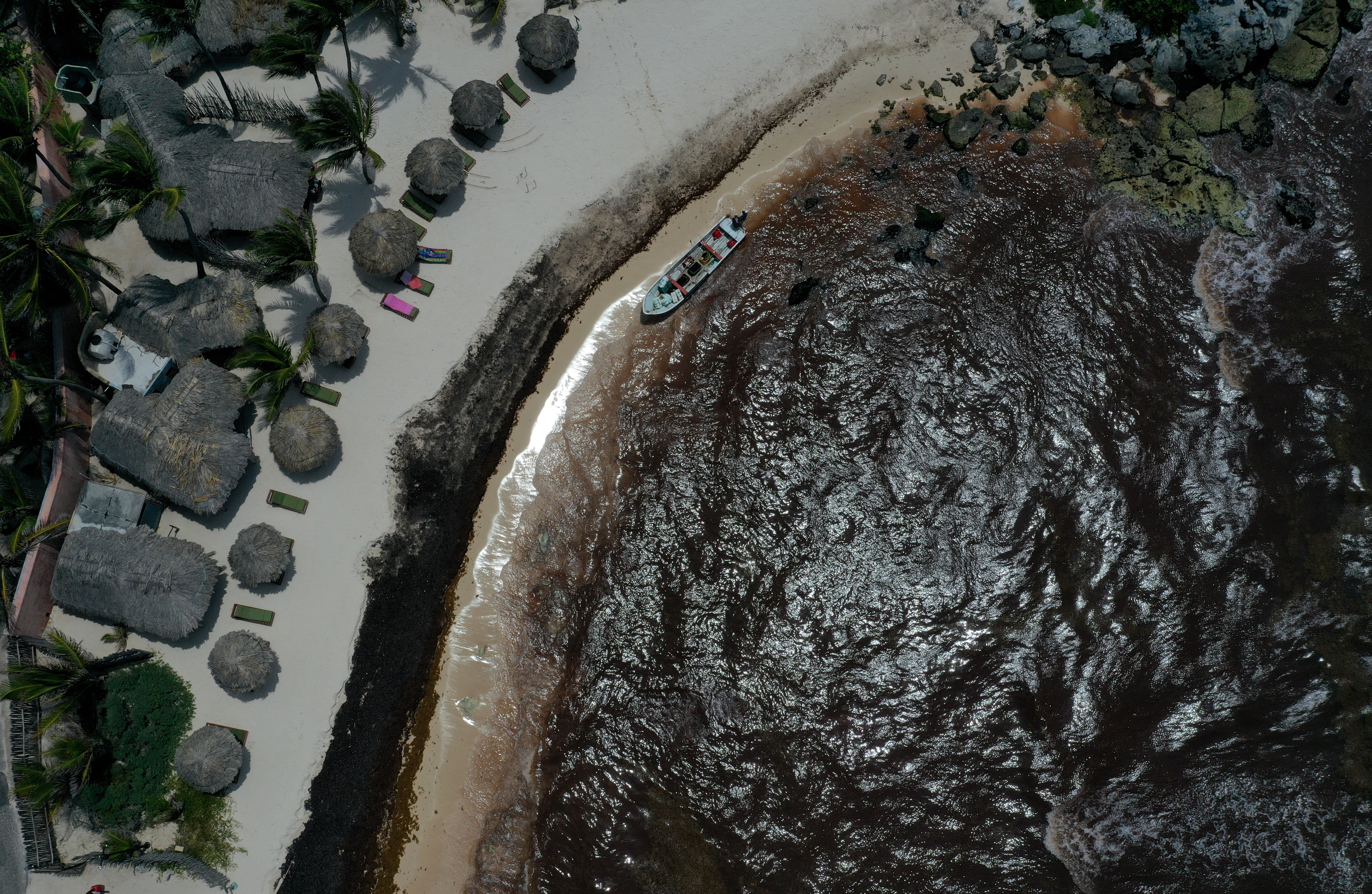The Largest Algae Bloom in World History Is Now Off the Florida Coast

Credit to Author: Madeleine Gregory| Date: Thu, 04 Jul 2019 18:12:42 +0000
The white-sand beaches and crystal waters of the Caribbean coast of Mexico are offering tourists and locals a surprise this month: the smell of rotting seaweed.
There is so much Sargassum seaweed in the Atlantic right now that you can see it from space, and when it washes up on shore to decompose, it stinks. In a study published in Science on Thursday, researchers from the University of South Florida used satellite imagery to identify an area they call the Great Atlantic Sargassum Belt (GASB) as largest macroalgal bloom in the world. As its peak, traveling its length would be equivalent to flying from LA to New York and back again.
“This phenomenon is likely to be a new normal,” lead author Mengqiu Wang said. “I think we have a high chance to see [blooms] again in the coming years.”
The researchers linked the GASB to human impacts—such as deforestation and fertilizer use in the Amazon, which has steadily increased nutrient runoff—as well as natural processes. When this macroalgae aggregates in coastal waters, it can deplete the oxygen levels, killing other life. When it dies, it sinks to the bottom and suffocate anything not fast enough to swim away. That, plus the rotten egg smell, sends tourists running and can disrupt local fisheries.
The Mexican state of Quintana Roo—home to popular vacation destinations like Cancún and Tulum—declared a state of emergency last month in response to the wave of Sargassum seaweed blanketing their beaches. Barbados declared a Sargassum-induced national emergency last year. Florida’s beaches are being choked by this seaweed, too.
Sargassum, a type of brown macroalgae, reflects light in the near infrared spectrum, which satellites can detect. Researchers analyzed satellite images across the whole ocean to identify Sargassum, tracking the location and movement of these large algal beds.
The researchers kept track of the seaweed bloom month after month, as it grew and shrunk seasonally. What they discovered was a massive spread of seaweed stretching across more than 8,000 kilometers of the Atlantic and weighing approximately 20 million tons in June 2018. This year’s bloom is similar in length, Wang said in an email, though its area has less coverage and weight.
Sargassum itself isn’t particularly harmful. In fact, a little bit of Sargassum is a good thing. It’s a critical habitat for some marine creatures, providing refuge and food. In these large mats, however, the algae presents some serious problems. Large blooms can trap marine life, making it difficult or impossible for them to move.
“It’s very difficult and maybe impossible to manage these blooms,” co-author Chuanmin Hu said. “It’s not local. It’s the entire tropical Atlantic ocean.”
Research on the GASB is still in early stages, and researchers are working to better predict future blooms. The blooms usually grow from January to June or July, corresponding with nutrient availability from the Amazon and Mississippi rivers.
Climate change may further impact the GASB. Higher sea surface temperature could slow the growth of these blooms, as happened in 2013, the only year since 2011 without a major bloom. Hu says that he thinks that ocean warming will happen too slowly to effectively control growth (and this would would devastate marine ecosystems in any case). However, climate affects precipitation patterns—which will affect the runoff from the Amazon—and natural factors like ocean upwelling patterns. Deforestation and fertilizer use, if they continue to worsen, will further pollute the oceans with excess nutrients, contributing to more algae growth.
Coastal communities have already begun getting creative in their adaptation to this crisis. A team of researchers in Mexico created an early warning system that uses weather and ocean current data to predict what beaches the algae will land on. Others are making use of this newfound material to create paper, shoes, livestock feed, and biofuel. One man even built a house out of Sargassum bricks. The algae is full of vitamins and proteins, making them potentially useful in pharmaceuticals.
Short of reforesting, reducing nutrient input, and generally slowing global climate change, humans may not have a lot of recourses to mitigate these blooms. Hu notes that these trends are hard to stop, and says we will likely have to adapt to beaches crowded with Sargassum.
“We can try to remove the sargassum from the beaches and make use of that Sargassum, make this bad thing into a good thing,” Hu said. “How we respond to Sargassum will be very important, because this emerging phenomenon may be a new normal.”
This article originally appeared on VICE US.